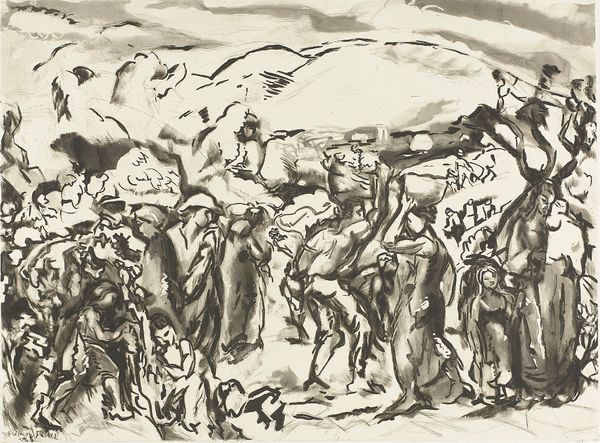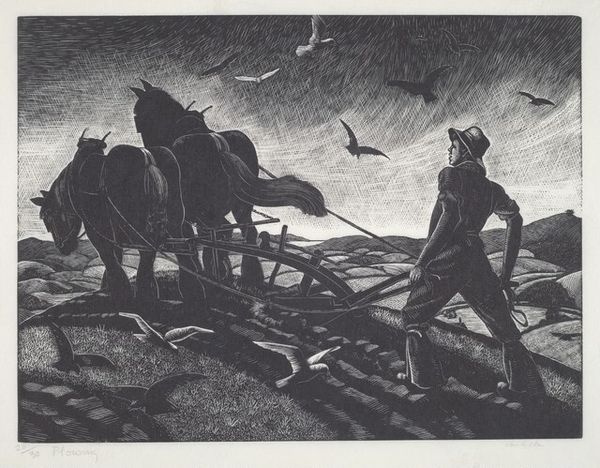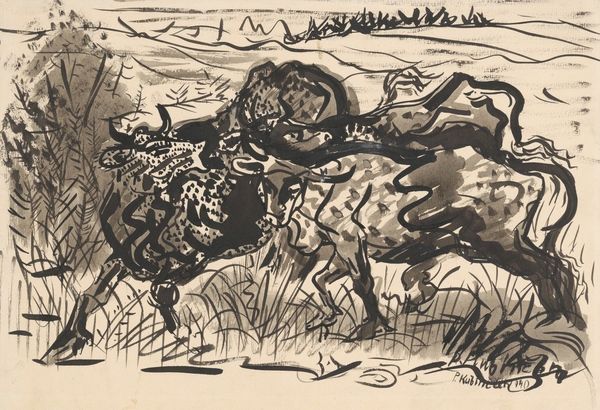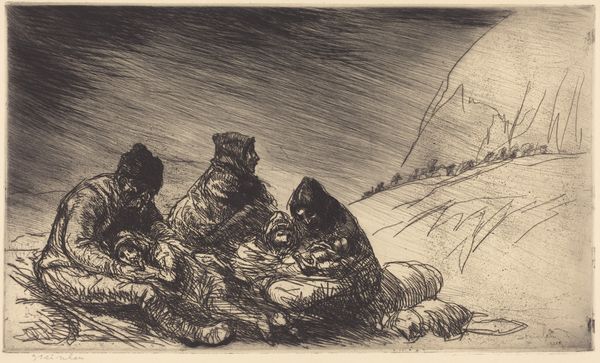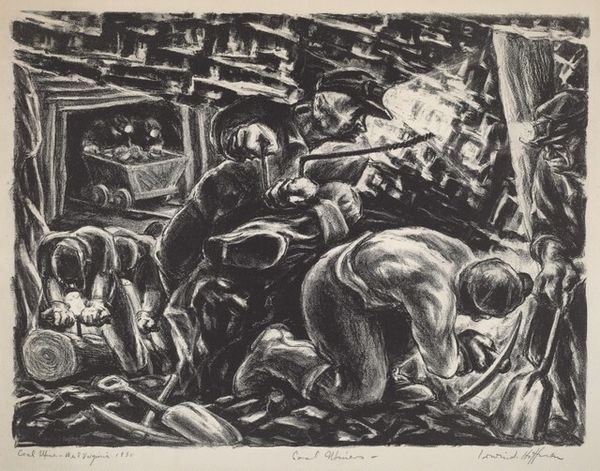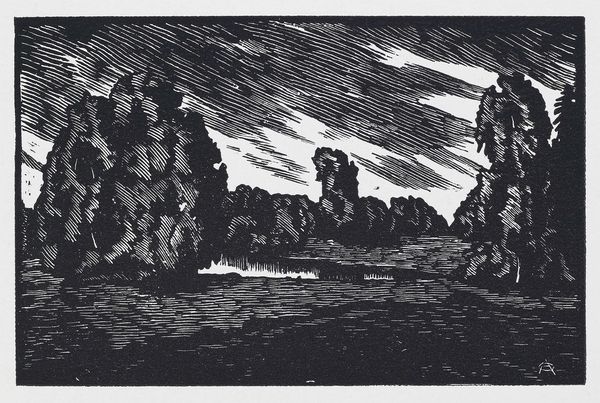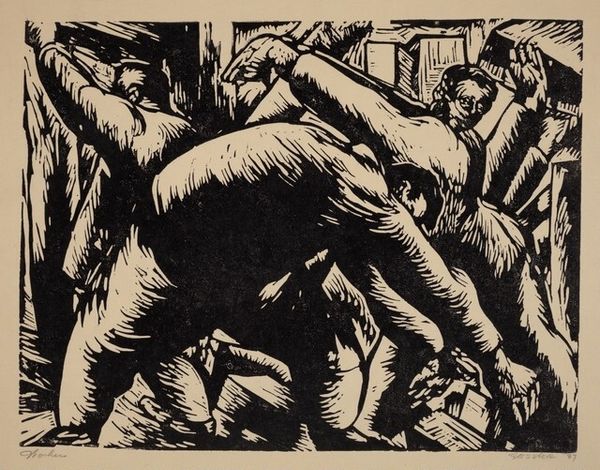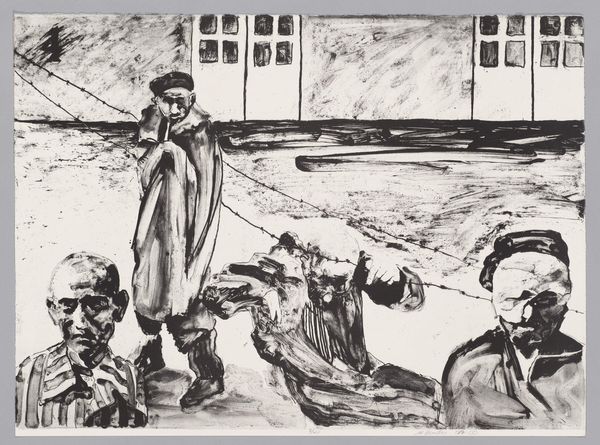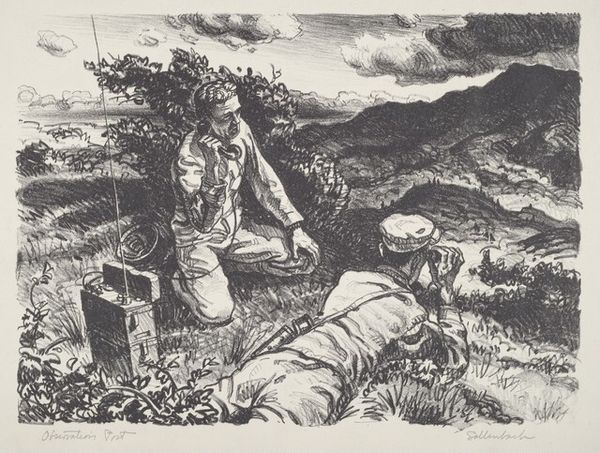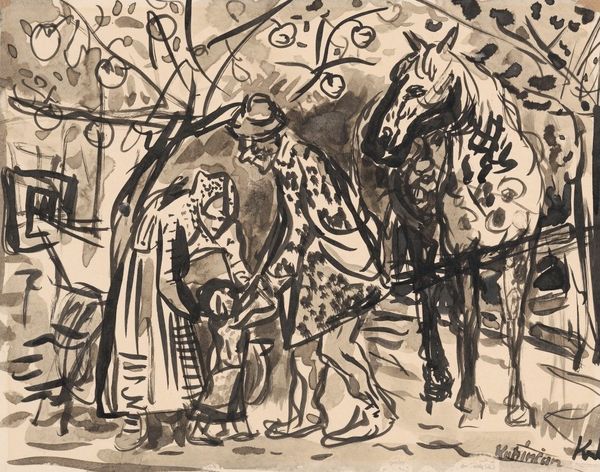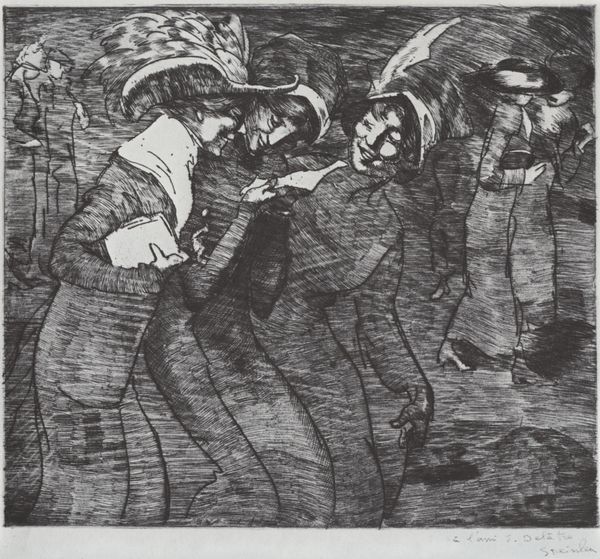
graphic-art, print, woodcut
#
graphic-art
# print
#
landscape
#
soviet-nonconformist-art
#
figuration
#
woodcut
#
abstraction
Copyright: Georgyi Yakutovytch,Fair Use
Curator: Looking at this powerful woodcut from 1960 by Georgyi Yakutovytch, entitled "Arkan (Ukrainian dance)", one can’t help but notice its raw energy. Editor: Yes, that’s immediate. It feels almost violently dynamic. The high contrast and swirling lines contribute to a sense of controlled chaos. It gives you an exciting feeling. Curator: Precisely! Yakutovytch has expertly employed the woodcut medium here. See how he’s used the stark contrast of black and white to define forms and create a compelling visual rhythm? It echoes the movement he depicts. Editor: Absolutely. Consider the labor-intensive process behind this piece. The artist has to physically carve away at the wood, each mark a deliberate act. It speaks to the dedication and physical exertion involved in artistic creation, and that links to the theme of the dance itself, I'd argue. Curator: An astute point. Note, too, how Yakutovytch simplifies the figures and the landscape into these elemental forms. It leans toward abstraction while still conveying the essence of the Ukrainian dance, imbuing the folk tradition with new significance. The interplay of positive and negative space also pushes figuration to its limits. Editor: Right, it’s almost as if the dance's cultural weight and energy have been impressed upon the woodblock itself. This feels much more than illustration. One begins to understand Ukrainian art in its resistance and cultural identity under the Soviets. What seems to be an innocent folk dance isn't as apolitical as one might imagine, especially given that context and those sharp graphic forms. Curator: The bold strokes also capture a profound sense of momentum, conveying a story beyond the immediate subject matter. This visual metaphor adds layers to a narrative of resilience in an era dominated by other forces. Editor: Thinking about the way such graphic work spread widely via printing, consider also how that process democratizes art itself, and culture. This print is more than art on a gallery wall; it is evidence of labor and transmission of identity. It feels intensely communicative. Curator: I agree. It's a striking example of how formal innovation and traditional subject matter can come together. A narrative encapsulated through rhythm, contrast, and form. Editor: Ultimately, considering its cultural value, its visual construction and the printing method, it highlights a dynamic connection between material, culture, and form.
Comments
No comments
Be the first to comment and join the conversation on the ultimate creative platform.
